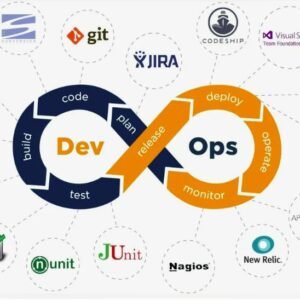The Significance of Software Development Life Cycle: A Comprehensive Guide
In today’s digital age, software development has become an integral part of various industries. From banking and finance to healthcare and education, software applications have revolutionized the way we live and work. However, developing a software application is not a straightforward process. It involves multiple stages, from planning and design to testing and maintenance. This is where the Software Development Life Cycle (SDLC) comes into play. In this article, we will explore the significance of SDLC and why it is crucial for successful software development.
Understanding SDLC

SDLC refers to the process of developing a software application from conception to deployment. It is a systematic approach that involves several stages, each with its own set of activities and deliverables. The SDLC model typically consists of the following stages:
a) Requirements Gathering: This stage involves identifying the needs and expectations of the end-users. It includes gathering requirements through various methods such as interviews, surveys, and focus groups. The output of this stage is a detailed list of requirements that will guide the development process.
b) Design: In this stage, the development team creates a blueprint for the software application based on the requirements gathered in the previous stage. The design includes user interface (UI) design, database design, and system architecture.
c) Implementation: This stage involves coding and programming the software application based on the design created in the previous stage. The development team uses various programming languages and tools to create the codebase.
d) Testing: After implementation, the software application undergoes rigorous testing to ensure its functionality, performance, and security. The testing phase includes unit testing, integration testing, system testing, and acceptance testing.
e) Deployment: Once the software application passes all tests, it is deployed to production servers for end-users to use. The deployment phase involves configuring servers, installing software updates, and migrating data from development to production environments.
f) Maintenance: After deployment, the software application requires ongoing maintenance and support to ensure its reliability and performance over time. This stage includes bug fixing, feature enhancements, security updates, and performance optimization.
Importance of SDLC in Software Development
a) Enhances Quality: SDLC ensures that software applications are developed with high quality by following a systematic approach that includes requirements gathering, design, implementation, testing, and maintenance. By following these stages in order, developers can identify and address issues early on in the development process rather than later in the cycle when they may be more expensive or difficult to fix. This results in higher-quality software applications that meet user needs and expectations.
b) Reduces Risks: SDLC helps to mitigate risks associated with software development by providing a structured approach that addresses potential issues at each stage of the cycle. By identifying risks early on in requirements gathering or design stages, developers can develop contingency plans or alternative solutions to minimize risks during implementation or testing phases. This reduces overall project risks and helps to ensure successful project outcomes.
c) Improves Collaboration: SDLC promotes collaboration among stakeholders by providing a framework for communication and feedback throughout the development process. By involving end-users in requirements gathering or user acceptance testing stages, developers can better understand user needs and expectations, which leads to more effective software solutions that meet user requirements. This also helps to ensure that all stakeholders are aligned on project goals and objectives throughout the development process.
d) Increases Efficiency: SDLC helps to increase efficiency by providing a structured approach that minimizes rework or wasted effort during development phases. By following a systematic approach that includes requirements gathering, design, implementation, testing, and maintenance stages in order, developers can avoid costly mistakes or miscommunications that may result in rework or wasted effort during later stages of the cycle. This results in faster time-to-market for software applications while maintaining high quality standards throughout the development process.
Best Practices for Implementing SDLC in Software Development Projects

Define Clear Project Goals: Before starting any software development project, it is essential to define clear project goals that align with business objectives. This helps to ensure that all stakeholders are aligned on project goals throughout the development process and reduces misunderstandings or miscommunications that may result in rework or wasted effort during later stages of the cycle. Clear project goals also help to prioritize requirements based on their alignment with business objectives rather than personal preferences or opinions of individual stakeholders.
Involve End-Users: To develop effective software solutions that meet user needs and expectations, it is essential to involve end-users in requirements gathering or user acceptance testing stages of SDLC. This helps to ensure that all stakeholders are aligned on project goals throughout the development process by providing a better understanding of user needs and expectations at an early stage of development when changes are less expensive or difficult to make compared to later stages of SDLC.
Continuous Integration and Continuous Delivery (CI/CD): CI/CD is a modern software development practice that automates the build, test, and deployment process of software applications. By implementing CI/CD, developers can ensure that software applications are continuously integrated, tested, and delivered to production environments without any manual intervention. This helps to reduce the time and effort required for manual testing and deployment, which results in faster time-to-market for software applications while maintaining high quality standards throughout the development process.
Agile Methodology: Agile methodology is a modern software development approach that emphasizes flexibility, collaboration, and iterative development. By following an Agile approach, developers can respond quickly to changing requirements and feedback from end-users, which results in more effective software solutions that meet user needs and expectations. Agile methodology also promotes collaboration among stakeholders by providing a framework for communication and feedback throughout the development process. This helps to ensure that all stakeholders are aligned on project goals and objectives throughout the development process.
DevOps: DevOps is a modern software development practice that integrates development (Dev) and operations (Ops) into a single, collaborative process. By implementing DevOps, developers can ensure that software applications are deployed quickly and efficiently to production environments without any manual intervention or downtime. DevOps also promotes collaboration among stakeholders by providing a framework for communication and feedback throughout the development process. This helps to ensure that all stakeholders are aligned on project goals and objectives throughout the development process.
Conclusion:
In conclusion, SDLC is crucial for successful software development because it enhances quality, reduces risks, improves collaboration, and increases efficiency. By following a structured approach that includes requirements gathering, design, implementation, testing, and maintenance stages in order, developers can avoid costly mistakes or miscommunications that may result in rework or wasted effort during later stages of the cycle. Best practices for implementing SDLC in software development projects include defining clear project goals, involving end-users, implementing CI/CD, following an Agile approach, and implementing DevOps. By following these best practices, organizations can develop effective software solutions that meet user needs and expectations while minimizing risks and costs associated with software development projects.
FAQs
SDLC, or Software Development Life Cycle, is a structured approach to developing software applications that includes requirements gathering, design, implementation, testing, and maintenance stages. It’s important because it enhances quality, reduces risks, improves collaboration, and increases efficiency in software development projects.
The best practices for implementing SDLC include defining clear project goals, involving end-users, implementing CI/CD, following an Agile approach, and implementing DevOps. By following these best practices, organizations can develop effective software solutions that meet user needs and expectations while minimizing risks and costs associated with software development projects.
Cloud computing is a modern software development practice that enables developers to access computing resources, such as servers, storage, and databases, over the internet. It relates to software development because it provides scalability and flexibility to meet changing business needs while reducing the cost and complexity of managing on-premises infrastructure.
Cybersecurity is a critical aspect of software development that ensures the confidentiality, integrity, and availability of software applications and data. It’s important because it protects software applications from cyber threats, such as malware, phishing, and data breaches. By implementing cybersecurity measures, developers can ensure the security of their applications and data.








